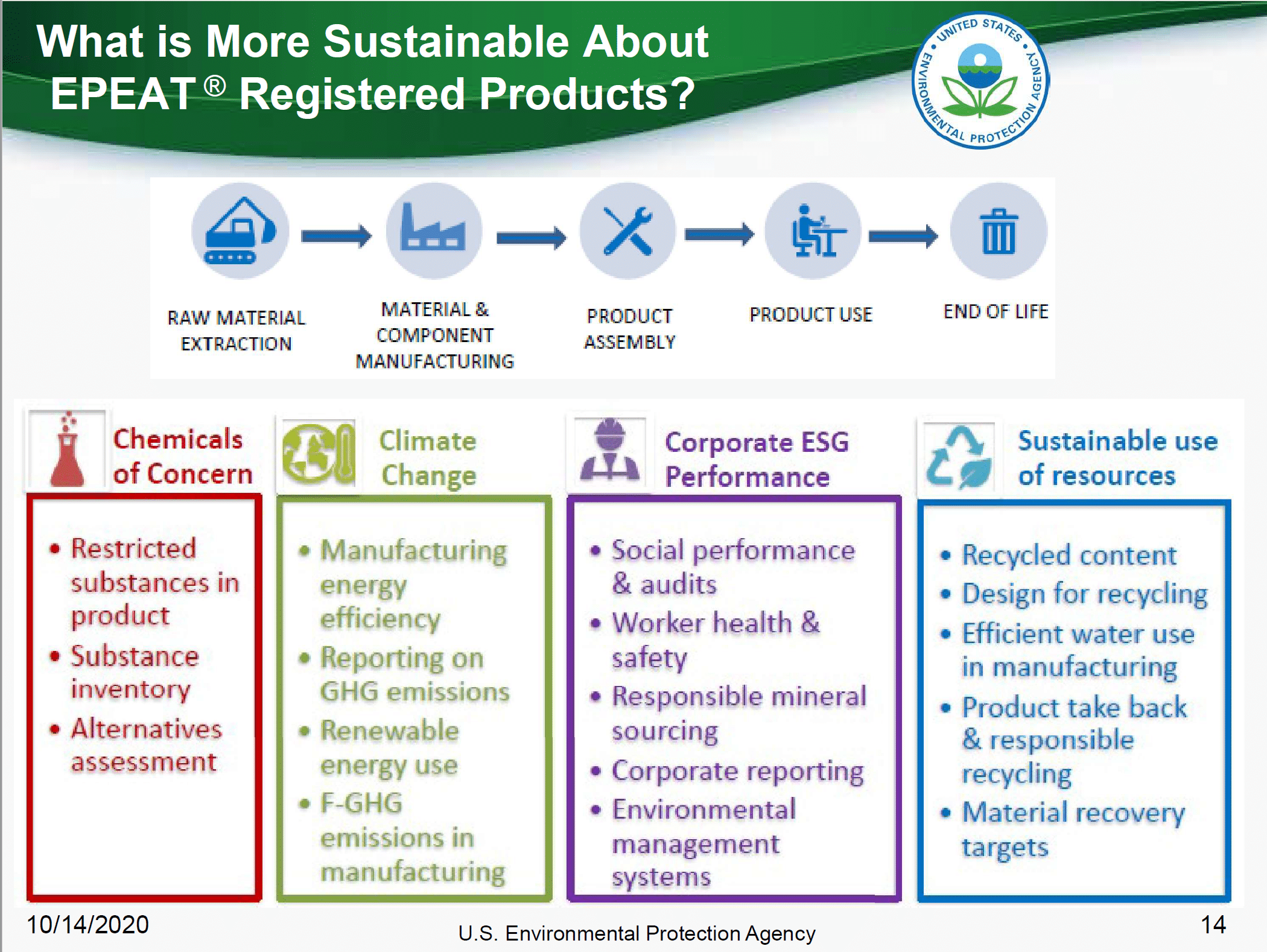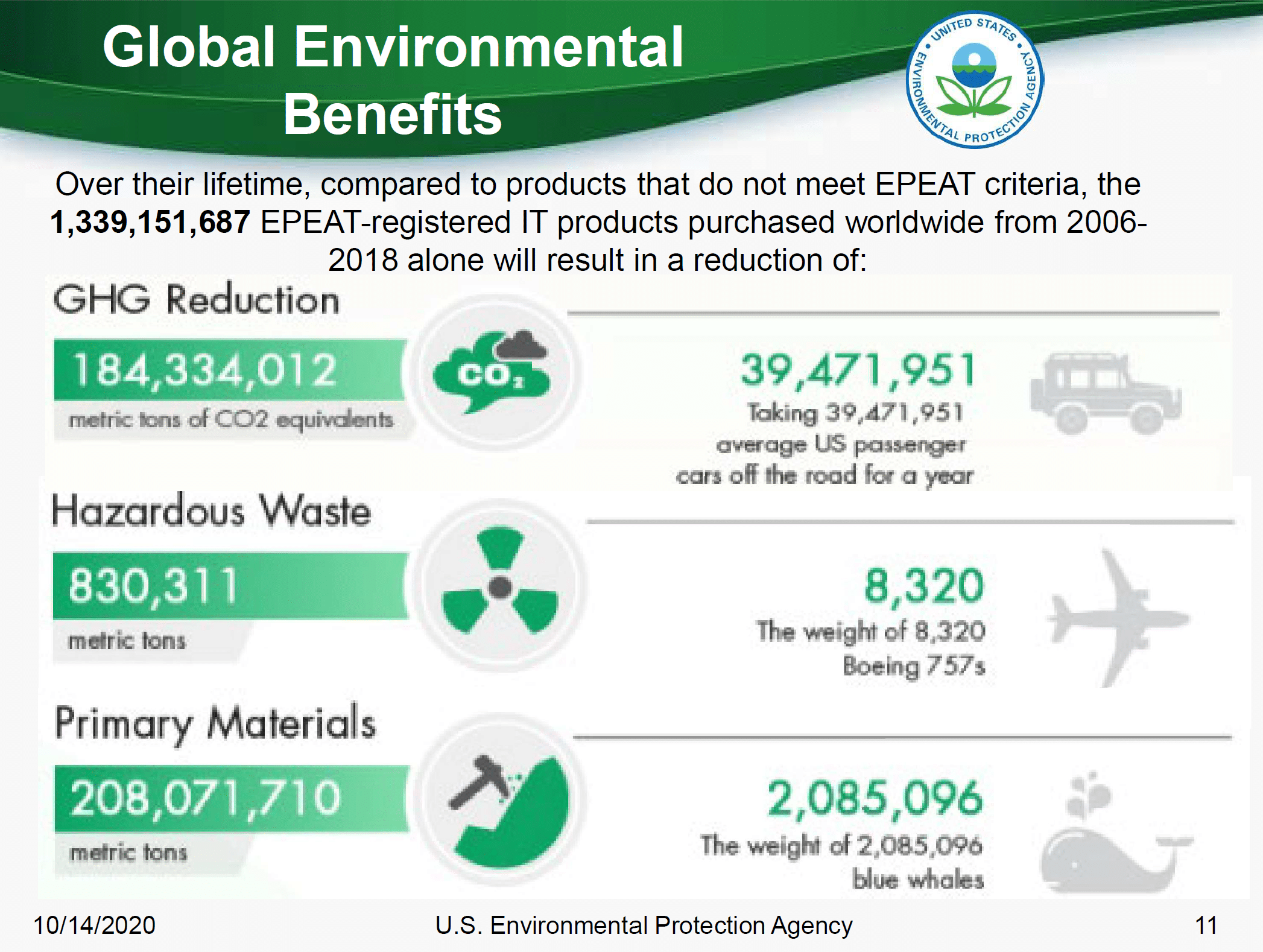In our last post, we began by discussing energy use/waste with our electronics. We talked about how production is one part of the problem, as well as our society’s constant demand for the latest and greatest product makes electronics the center of an unsustainable cycle. However, we do have an option to purchase items that are more sustainable from beginning to end. The Environmental Protection Agency (EPA)’s ENERGY STAR® and the Green Electronics Council’s EPEAT are two designations you can look for that signal that the item is a more environmentally sustainable option.
The EPEAT logo was introduced in the previous blog post. “EPEAT is the definitive global registry for sustainable electronics. It’s an easy-to-use resource for purchasers, manufacturers, re-sellers and others wanting to find or promote environmentally preferable products”(https://greenelectronicscouncil.org/epeat/registry/). The EPEAT registry from the Green Electronics Council was the first stop on the search for a more sustainable option for our new printer. You will notice that this website is geared more for large scale purchasers as well as manufacturers. But it can be a great place to search if your new personal or small business electronics are on the list, as was our family’s new printer. There is a huge amount of information on the Green Electronics Council, much more than this blog can address. However, you can see what requirements are to become certified as an EPEAT electronic. The requirements are extensive and go from production to the eventual need for retiring an electronic.
The graphics above from the EPA give a good picture of the benefits of purchasing EPEAT products. There is also a benefits calculator associated with the EPEAT designation that can be used to see how much and where the environmental benefits are for products purchased with an EPEAT designation.
The EPA also has great information for making more sustainable choices with electronics, most notably using ENERGY STAR® rated products. Their website, https://www.energystar.gov/products/office_equipment, provides information on products that use less energy in all modes of operation. Also check out https://www.epa.gov/fec/publications-and-resources#calculator which has information from the purchase to the recycling of an electronic, including ways to make better choices for operation of the electronic.
As you can see, with a little searching, we can all make a more sustainable choice when purchasing electronics. And once it has run its course, we can recycle our electronics in a responsible manner, which we will discuss in the next blog.


